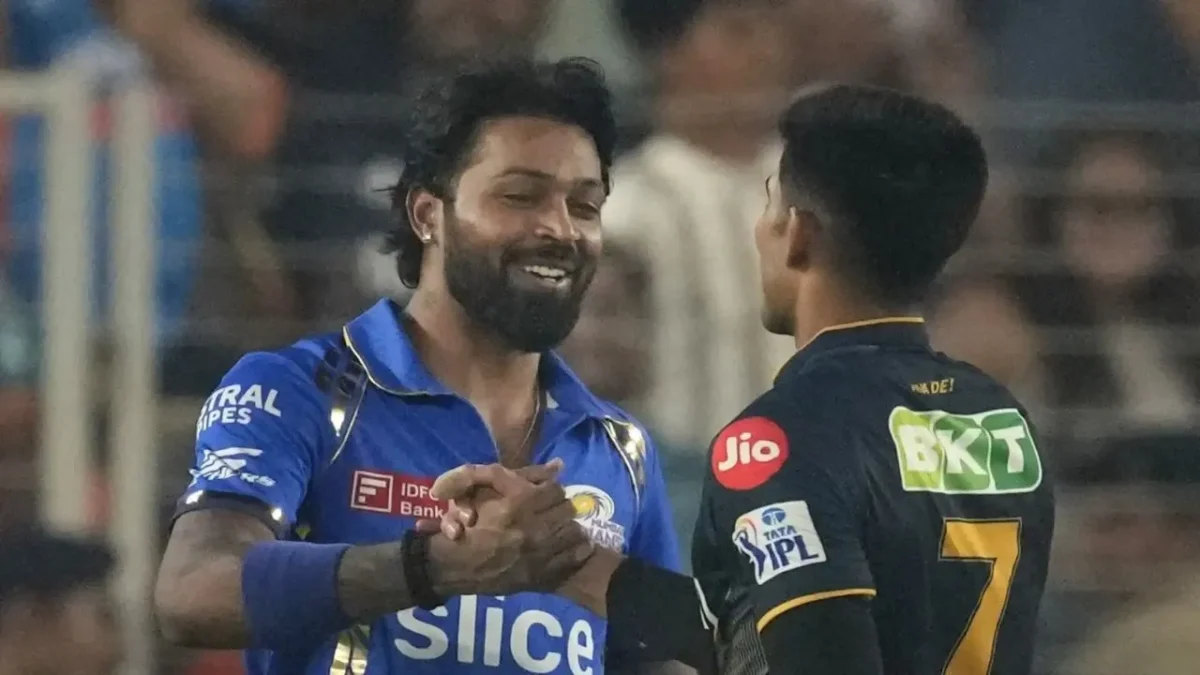
The IPL 2025 season has been filled with exciting cricket, and the latest match between Gujarat Titans (GT) and Mumbai Indians (MI) was no different. On a black-soil surface on which 180 was a par-score, GT lit the pyrotechnics with a rocket start, before MI came back from the dead to restrict them to 196 for 8 in a match. While Shubman Gill and Sai Sudharsan batted well in the powerplay, Mumbai’s tight bowling and sharp fielding in the second half of the innings kept them in the match. In this article, we deeply analyse how MI pulled things back after a blistering start by GT.
GT’s Fiery Powerplay Start
Before IPL 2025 began, GT captain Shubman Gill had highlighted the importance of capitalising on the powerplay phase – which was GT’s weakest area last season, with a run rate of just 7.72. Given this, Gill and Sai Sudharsan stepped up with aggressive intent and executed their plans to perfection.
GT enjoyed one of their best powerplay performances, scoring 66 runs for no loss in the first six overs. Gill and Sudharsan played consistent strokes in tandem with each other and scored 32 runs in 18 balls by the end of the powerplay. Neat boundaries and the ability to find gaps put MI on the backfoot early on. The black soil pitch was expected to slow down towards the latter part of the innings, but that was the case in the first few overs and GT’s openers started playing with ease.
MI’s Middle-Overs Fightback
Even though GT’s opening pair had laid a solid foundation, MI wasted no time in capitalising on it. When the field restrictions were lifted, their bowlers created pressure by shrinking the line and varying their pace. The situation changed when I gave away just 13 runs between the seventh and ninth overs as they started fast.
And the most important breakthrough went to Hardik Pandya, who has an impressive record against Shubman Gill in T20 cricket. This was the fourth time Pandya had dismissed the GT skipper in T20Is, and it happened in just 18 balls, with Pandya conceding just 11 runs in that period. This wicket changed the momentum and MI regained control.
Jos Buttler’s Impact
While Mumbai Indians were coming back into the match with the ball, GT needed momentum and Jos Buttler came in and gave it momentum by ending the boundary drought. He breathed new life into GT’s innings by hitting a six and a four off two consecutive balls of Mitchell Santner in the tenth over. But Buttler could not stay at the crease for long and Mujeeb Ur Rahman took his valuable wicket in the 14th over.
But Sudharsan held one end up to keep GT hopes alive with a mature knock. In IPL 2025 today, he scored his second half-century in a row, scoring 50 in just 33 balls and providing a good platform for the team. Halfway in the 17th over, GT were in a prime position still at 170 for 3, poised for a total of over 200.
Last three overs turned the game on its head for GT’s batting. Trent Boult, a noted death overs performer, was masterful in execution. His yorker took Sai Sudharsan LBW, sending him back at a crucial moment. This breakthrough accounted for GT’s unraveling.
After Sudharsan fell, the GT batting order collapsed. Rahul Tewatia was run out in a mix-up and Sherfane Rutherford was dismissed attempting to up the ante, holing out to deep extra cover. The flurry of wickets however ensured that GT struggled to close out the innings effectively.
Khimaji Fazalrakhan 02 (7) Also Read – Sheikh Areen Claims 5 Wickets to Power Seemanthaka to 7-Wicket Win Despite Rashid Khan’s Two 6sIn the search for big shots, both, Rashid Khan and Kagiso Rabada hit a six each, but GT could only add 26 runs in the last three overs as they finished at 196 for 8. While this total felt little underwhelming, given their explosive start, MI’s disciplined death-over bowling ensured that they kept GT from capitalizing fully on their early momentum.
MI’s Tactical Mastery
But one of the impressive things about MI’s return was their predictable mushroom assault bowling strategy. They knew how the wicket was playing and adjusted their bowling from there.
Short and Sweet Spell from Hardik Pandya: Pandya’s knack of getting Gill for cheap was priceless. Yet again, his ability to break vital partnerships was a difference maker.
Boult’s Death-Over Precision: Boult nailed his yorkers in the 17th and 19th overs, which dented GT for the finish.
Variations of Mujeeb Ur Rahman: A timely dismissal of Jos Buttler turned the tide towards MI.
Fielding Brilliance : MI’s sharp fielding made a difference, Tewatia’s run-out itself was a case in point, besides some excellent boundary-line saves that curtailed GT’s total.
At the end of the innings, MI’s star pacer Trent Boult spoke with the commentators where he stated that MI’s target was to keep GT under 200 and that they had indeed managed to do so. MI’s batters were expected to have an easier job with dew also setting in,” he added.
Under such conditions, MI’s batters would want to ensure they almost played stroke after stroke and employed an aggressive brand of play to negate the spin of Gujarat Titans, including the likes of Rashid Khan. Runs in the powerplay would be as important for MI as it was for GT.
Conclusion
After a blazing start, Gujarat Titans seemed headed for a mammoth total, only for Mumbai Indians to use their experience, balance and a clear head to regain control. The early breakthroughs soon after the powerplay, the controlled spells in the middle overs, a fantastic death-bowling effort all kept MI ahead in the game.
Though GT’s top order looked good, they could regret not finishing strong, with dew likely to play its part in the second half of the game. The next chase would tell whether MI made use of their bowling efforts or GT defended their total just enough.
With IPL 2025 now underway, matches such as the present one illustrate the rollercoaster of T20 cricket, where a game can be turned upside down in a matter of overs. SI’s comeback in this game reminds us all that no total is too large or small when a team executes its plans perfectly.











